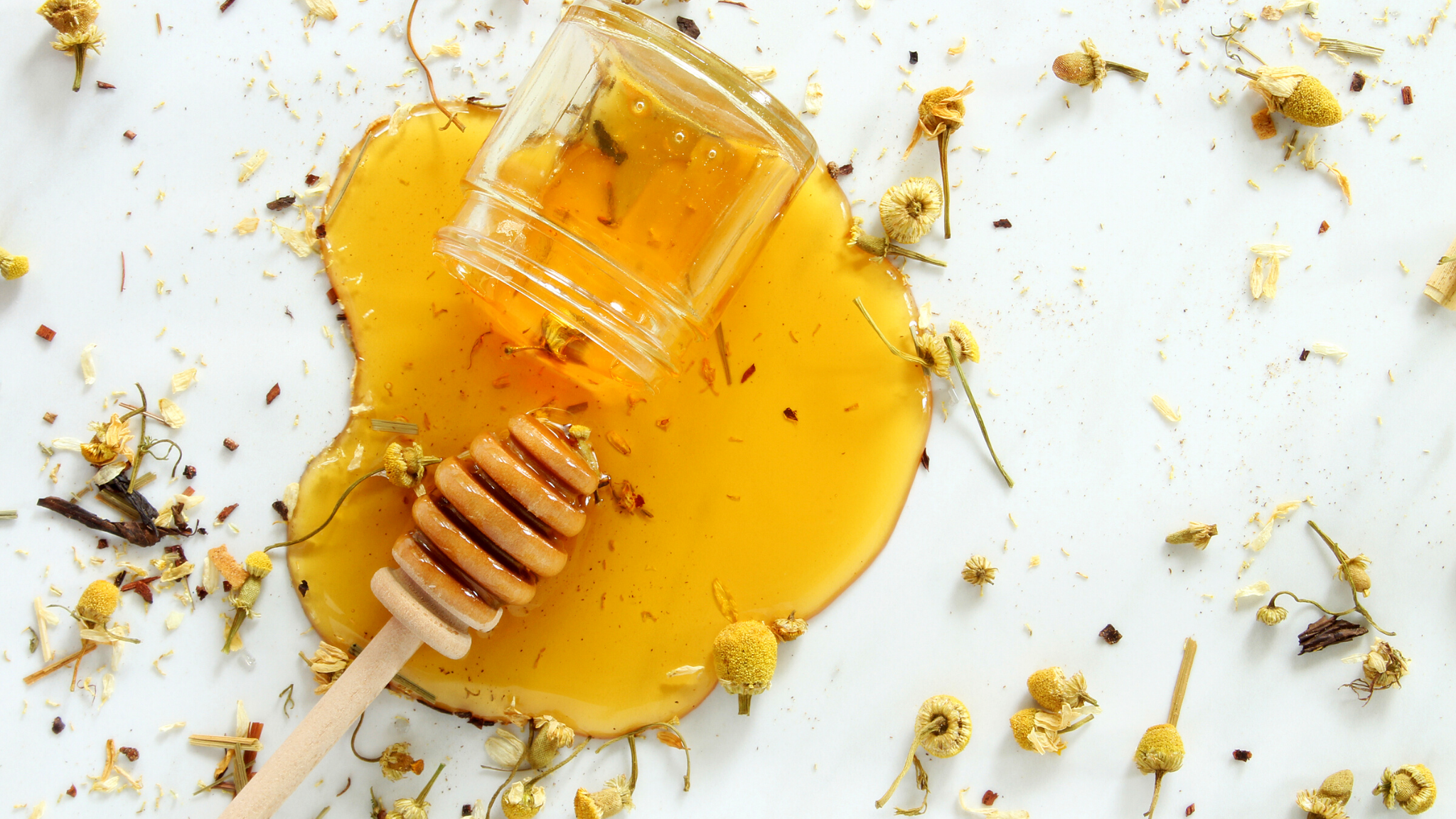The restorative and medicinal properties of honey have been known for thousands of years, but not all honeys are created equal.
Each honey is a complex mix of some 200 compounds, natural enzymes and the flora unique to its region. Because of this, it’s only relatively recently that some especially potent honeys have been discovered in New Zealand and the remote wilderness of Western Australia – manuka honey and the newly unveiled jarrah honey.

These honeys have incredible health and skincare benefits, courtesy of the botanical qualities of their namesakes, the manuka and jarrah trees. They’re both rich in antioxidants, promote healing and are naturally antimicrobial, but that’s not to say they’re identical – there are some important distinctions between the two.
Manuka honey
The well-known manuka honey is produced from the nectar of the manuka (or leptospermum) tree found primarily in New Zealand, and has been praised for its antimicrobial power.

This power comes from a unique active compound known as methylglyoxal (MGO) that has been proven to inhibit microbial growth, and has the added benefit of not inducing bacterial resistance like other antibiotics.
Manuka honey also has an anti-inflammatory effect, which makes it an excellent acne treatment when combined with its ability to remove acne-causing bacteria from your pores. Its natural pH balancing qualities can also help speed up the healing process, making it a great option not only for acne, but other skin conditions such as eczema, dermatitis and minor injuries.
Jarrah honey
The newly discovered jarrah honey is found only in the pristine wilderness of Western Australian forests, and is produced from the flowers of the jarrah tree.
Like manuka honey, it has strong antimicrobial qualities, but instead of MGO it contains a stronger compound – hydrogen peroxide. This active ingredient is up to 50% more effective against unwelcome microbes, and can even deal with dangerous pathogens like MRSA. Studies have shown that even with its active ingredient removed, jarrah honey still possessed unusual antifungal properties, suggesting that the jarrah forests of WA hold yet untapped potential.
The unique flora native to the region also boast an impressive range of skincare benefits.

Jarrah honey has up to three times more antioxidants than manuka honey, naturally enhancing elastin and collagen production, as well as boosting cell renewal. Just like manuka honey, jarrah honey has excellent anti-inflammatory and antimicrobial properties, but also has the added benefit of fighting common fungal skincare conditions such as tinea.
It even happens to taste better.
Availability
Manuka honey is produced across New Zealand and is widely available, but that’s not necessarily a good thing. While pure manuka honey sourced from New Zealand is an excellent skincare product, the demand for it has produced a host of misleading and deceptive fakes that purport to be the real deal, but are in fact diluted or contain synthetic ingredients and chemicals. Take care that you only buy the genuine article.
Jarrah honey on the other hand is much rarer – it’s found only in the forests of southwest Australia. While harder to get your hands on, the local honey industry is taking great care to maintain a close chain of custody between the businesses and customers, so that the unique benefits of the jarrah forest aren’t diluted or adulterated like so many other honeys.
Our Beeautify Products contain up to 50% of Jarrah Honey, to learn more about our specific products and their benefits click here.
References
Manning, R J. (2011),
Research into Western Australian honeys. Department of Primary Industries and
Regional Development, Western Australia, Perth. Report.
Guttentag, Annabel, Krishothman Krishnakumar, Nural Cokcetin, Steven Hainsworth, Elizabeth Harry, and Dee Carter. 2021. "Inhibition of Dermatophyte Fungi by Australian Jarrah Honey" Pathogens 10, no. 2: 194. https://doi.org/10.3390/pathogens10020194



